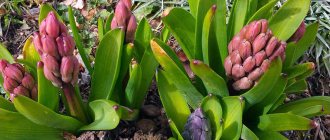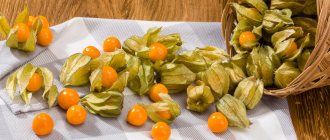The rosemary plant (Rosmarinus) is part of the Lamiaceae family. This genus is represented by evergreen shrubs and subshrubs. Under natural conditions, this plant can be found in such European countries as Portugal, Italy, Spain, Greece, in the southern part of France and in the countries of the former Yugoslavia, as well as in North Africa: Tunisia, Libya, Morocco, Algeria, as well as in Turkey and in Cyprus.
From Latin, “rosemary” is translated as “sea freshness”, this is explained by the fact that the ancient Greeks associated rosemary with the sea Aphrodite, who appeared from sea foam. However, the smell of this plant is not at all similar to the iodine sea aroma. It is more like a combination of the smell of camphor and pine, so the Greek name of the plant, translated as “balsam bush,” is closest to the truth. People used to believe that rosemary helped improve memory; therefore, in Ancient Greece, students often put wreaths on their heads, which were woven from rosemary branches. In culture, this plant has become popular due to its special aroma. This plant is included in the “bouquet garni” and the collection of Provençal herbs, and is also added to drinks, marinades, and vinegar is infused with rosemary. This evergreen shrub is distinguished by its heat-loving nature, so it can be grown in open ground only in those regions where winters are warm. And in those countries where the climate is cool, rosemary is grown as a container and indoor crop.
Brief description of cultivation
- Landing . Rosemary seeds are sown for seedlings in the last days of February or the first days of March, and the seedlings are transplanted into open ground from mid to late May.
- Illumination . A large amount of bright sunlight is needed.
- Soil . Calcareous, well permeable to water and air.
- Watering . Should be moderate. Water is poured carefully under the root to avoid drops falling on the surface of the leaf blades.
- Fertilizer . In spring, nitrogen-containing fertilizer, for example, urea or ammonium nitrate, is added to the soil on the site. After this, once every 30 days, rosemary is fertilized with a solution of complex mineral fertilizer. In autumn, fertilizers that contain only phosphorus and potassium are used.
- Reproduction . By cuttings, dividing the bush, seeds and layering.
- Harmful insects . In indoor conditions - whiteflies and aphids, in open ground - aphids.
- Diseases . In winter, in indoor conditions, the plant can get downy mildew.
Diseases and pests
A slightly unfortunate choice of a container that is too large for rosemary (as they say, for growth) often leads to the development of root rot . Unfortunately, the disease is serious. Very often the flower cannot be saved in any way. Unless by transplanting the strongest of the surviving cuttings.
And with excessive dry air and lack of watering, rosemary is often affected by powdery mildew . You should get rid of this white coating radically: cut off the affected areas with a margin, remove the top layer of soil and generously water the remaining parts of the flower with fungicide.
If there is not enough light, rosemary can also dry out and acquire an unpleasant brown tint on the stem and leaves.
But as for insects, rosemary is the plant that repels most pests. First of all, due to its pronounced insecticidal properties (smell, taste).
However, the ubiquitous aphid can also settle on rosemary. They get rid of it using purchased products or popular folk methods. For example, by treating the plant with a solution of hydrogen peroxide.
Features of rosemary
Rosemary is a shrub whose height can vary from 0.5 to 2 meters. Its root system is very powerful and developed, it penetrates the soil to a depth of 3–4 meters. There is pubescence on the surface of the grayish obtuse tetrahedral young shoots. Perennial woody stems with peeling bark are dark gray in color. Sessile linear leaf blades are leathery to the touch and have downward curved edges. The leaves reach about 0.4 cm in width and up to 3.5 cm in length, their front surface is glossy, and the back surface is pubescent. Lush panicle-shaped inflorescences consist of flowers of pale purple, dark purple or white. This plant is a relative of the following crops: hyssop, basil, lavender, mint, motherwort, thyme (thyme), oregano and lemon balm. The upper parts of annual shoots, along with foliage and flowers, are used fresh, adding to dishes of legumes, cabbage, eggplant and meat.
Rosemary. Reproduction and cultivation.
Soil preparation
How to grow an Orchid from seeds at home
To plant seeds, you can buy soil for indoor plants, which is sold at any gardening store. If you can’t buy it, you can prepare the mixture yourself.
For the soil substrate you will need:
- garden soil;
- river sand;
- rotted compost.
The proportion is 2:1:1, where 2 is garden soil, 1 is river sand, 1 is rotted compost.
But that's not all! To create ventilation and prevent the appearance of stagnant water in the container, the bottom is covered with drainage material. It can be pebbles or expanded clay. You need to fill about 1/3 of the box or pot.
Planting rosemary seedlings
What time to sow seedlings
To propagate rosemary, they use the seed method, cuttings, dividing the bush and layering. In regions where winters are cold, this plant is recommended to be grown from seeds through seedlings. Sowing of seeds is carried out in the last days of February or the first days of March.
Features of sowing
Before sowing, the seed material is kept in water for several hours. When the seeds swell, they are sown in moistened sand or vermiculite, and they need to be buried only 0.3–0.4 cm into the substrate, and the container must be covered with film on top. If you want seedlings to appear as soon as possible, the crops are constantly kept warm (25 to 30 degrees). Do not forget to systematically remove the shelter and moisten the substrate with a spray bottle so that it is always slightly damp. If everything is done correctly, the first seedlings should appear after 6–8 weeks. Immediately after this, the shelter is removed, and the crops are moved to a well-lit place. Remember that the substrate in the container must be watered regularly; for this, use warm, well-settled water. After the height of the seedlings is 70–80 mm, they are planted in open ground.
An easy way to sow rosemary.
Reproduction
You can propagate in the following ways:
- By cutting - a cutting 10-15 cm long is cut from a strong one-year-old shoot, the leaves in its lower part are removed and placed in a container with water for 2-3 days. After this, the lower cut of the cutting is dusted with a root formation stimulator such as “Kornevin”, and planted in a pot with prepared soil mixture, covered with a transparent plastic bag on top. The pot with the cutting is placed in a bright, warm room and, periodically removing the bag, its leaves are ventilated and sprayed. After the cutting takes root and gets stronger, it is transplanted into a larger container or into open ground;
- Layering - for this method, a long strong shoot is selected, bent to the ground, fixed with staples, and then covered with earth so that its top remains above the surface. During the season, a secondary root system is formed in the internodes sprinkled with soil. At the end of summer and beginning of autumn, the seedling is separated from the mother plant and transplanted into a pot or open ground;
- By dividing the bush - like other crops, rosemary can also reproduce by dividing the bush. To do this, dig up a well-grown and strong bush and, with a sharp and sterile instrument, divide it along the root system into several new seedlings;
- By seeds - with this method, seeds collected from a plant or purchased in a specialized store are sown for seedlings in containers, boxes or directly into open ground.
Growing rosemary at home
Landing
First of all, rosemary seedlings are grown from seeds; how to do this is described in detail above. After the height of the seedlings is 70–80 mm, they are planted in separate pots (it is better to take clay ones), which should reach 9–11 centimeters in diameter; there must be holes for drainage at the bottom. The container should be filled with a substrate that allows air and water to pass through well; to create it, a universal soil mixture is combined with vermiculite or sand. You can make a soil mixture from humus, sand, turf and deciduous soil (2:1:2:2). A small hole is made in the wet soil mixture, the depth of which should be equal to the height of the seedling root. Carefully remove the plant from the container, taking it along with the earthen lump, and plant it in a pot in a previously prepared hole. Lightly compact the substrate around the plant.
Illumination and temperature conditions
It is recommended to place the planted bush on a south-facing window. To ensure that the rosemary crown is beautiful and not one-sided, the container with the plant is regularly rotated 180 degrees around its axis once every 7 days. In spring and summer, it is recommended to move the bush, if possible, to fresh air (terrace, garden or balcony). With the onset of autumn, after the air temperature begins to drop to minus 1 degree, the plant is transferred into the house. It is not advisable to ventilate the room where the rosemary is located, since cold air from the window can harm it. However, if there is no air circulation in the room, then mold may appear on the bush. To avoid this, a fan should be running in the room every day for 3-4 hours. In winter, the air temperature in the room should be below 16 degrees, and the bush needs a low level of humidity at this time.
Pests
When grown indoors, aphids and arachnids can settle on the plant. If you notice pests on the bush, treat it with a solution of an acaricidal or insecticidal agent. Please remember that several treatments may be required to completely eradicate pests.
Watering
Make sure that the soil mixture in the pot with the plant is always slightly moist (not soggy). You can tell that a shrub is lacking moisture by looking at the lower foliage: it turns yellow. If there is too much moisture in the soil mixture, then the leaves of the bush begin to fly off.
It is recommended to moisten the substrate in a pot using a watering can with a long and narrow spout, because water should not get on the surface of the leaves, as this can cause mold. Before watering, the water should stand for at least a day, and its temperature should be close to room temperature.
Fertilizer
During the growing season from March to September, the plant needs to be fertilized with mineral fertilizers, which must include calcium. Feeding is carried out regularly twice a month. In winter, the plant is not fed at all or done much less frequently (once every 4–6 weeks).
Rosemary. Planting and care.
Fertilizing in closed ground
You won't see any big tricks in feeding rosemary. Yes, the plant needs fertile soil. But even in poor soil, rosemary will grow quite steadily and confidently.
There is no need to experiment with fertilizers. It is better to give preference to a soft option - universal mineral supplements. They are sold in all flower shops.
ON A NOTE. Please note that rosemary is a big fan of calcium-rich fertilizers.
Feed your flower from the end of March. You should not fertilize the soil too intensively. A maximum of 2 procedures per month is sufficient.
In winter, fertilizing is not needed at all. And they completely stop adding them in early autumn, in September, October.
Growing rosemary in open ground
You can also grow rosemary in open ground. To do this, choose a well-lit place that has reliable protection from gusts of wind. The soil needs to be light, loose, well-permeable to water and air, and preferably limed.
Seedlings are planted in open ground from mid to late May after warm weather sets in, and by this time the plants should reach a height of 70 to 80 mm. If you plan to grow large bushes, then when planting seedlings, keep a distance of half a meter between them. And if you don’t plan this, then it is enough to maintain a distance of 10 centimeters between the plants. Planted bushes need to be watered.
Features of care
Growing rosemary in your garden is not as difficult as it may seem. You need to care for it in almost the same way as other garden crops, or rather, it should be systematically watered, fed, weeded, pruned, and do not forget to loosen the soil surface in a timely manner.
7 days after planting, the bushes need to be pinched at the tops of the stems, in which case they will grow more lush and spectacular. Remember that the first flowering of such a plant can be seen no earlier than the second year after planting in open ground.
Trimming
Bushes of upright rosemary, starting from the age of two, are pruned at a height of 3-4 internodes on last year's growth, and this is done in April. Prostrate rosemary does not need pruning.
Pruning for the purpose of rejuvenating the bush is carried out once every 7 years; for this, all stems are cut off at the level of the soil surface. In spring, formative pruning is also carried out. You can form the plant in the form of a cube, a ball, or a miniature tree (for example, in the shape of a cypress). The rosemary broom bonsai is very popular among gardeners.
Wintering
This shrub is heat-loving, so in mid-latitudes it may die in winter. In order to preserve the plant until spring, it is dug up and planted in a container, which is transferred to a well-lit and cool (no higher than 16 degrees) room. If it is not possible to dig up rosemary, then it is cut off at the level of the surface of the site and covered with a layer of dry leaves or sawdust, then a tent is made from spruce branches around the plant.
Watering
Rosemary is distinguished by its resistance to drought, but it still needs timely and proper watering. If the plant feels a lack of moisture, then because of this its lower leaf plates will begin to turn yellow. And due to the regular stagnation of liquid in the soil, part of the root system of the shrub dies off, and its leaves are also observed to fly around.
Watering should be moderate. Pour water carefully under the root, because if its droplets fall on the foliage, this may cause the development of mold.
Fertilizer
In spring, it is recommended to add nitrogen-containing fertilizer to the soil on the site; this will be an excellent start for the growth of rosemary. And then, throughout the entire growing season, complex mineral fertilizer is systematically applied to the soil once every 30 days. In the autumn, fertilizers that do not contain nitrogen are used for fertilizing, but they should contain a lot of phosphorus.
What pot or container is suitable for growing rosemary on a windowsill?
But with the choice of suitable containers, certain difficulties may arise.
See for yourself: almost everyone plants rosemary only in clay pots. It is believed that this is much better for the roots, which will “breathe” underground. But another rule is also relevant - clay containers absorb some of the moisture. Therefore, you need to be more careful about watering with it. Do not flood the plant, but also do not allow the moisture to quickly evaporate and go into the pores of the pot.
For clay containers, rosemary must be watered slightly differently than in standard requirements. It is better to do this a little more often, but less abundantly.
The second point is that the container should be quite spacious, since the root system of rosemary is branched and strong.
Reproduction methods
How to grow rosemary from seeds is described in detail above. However, this is not the only way to propagate such a shrub. So, it can also be propagated by layering, cuttings and dividing the bush.
Cuttings
Cuttings are harvested in September–October; annual stems are used for this. The length of the cuttings should be from 8 to 10 centimeters, and they should also have 3 or 4 internodes. From the bottom, tear off all the leaf plates and treat the lower cut with a preparation that stimulates root growth. Cuttings are planted for rooting in a container filled with a loose and light substrate that is well permeable to water and air, and sterilized in advance (for example, you can take a mixture of vermiculite and peat). Place the cuttings in a warm place, protected from direct sunlight.
Make sure that the soil mixture in the container is always slightly moist, and the cuttings themselves must be moistened with water from a spray bottle every day. When new leaf plates grow on the cuttings, they are transplanted into individual pots reaching from 70 to 90 mm in diameter. 7 days after transplantation, the tops of the cuttings are pinched, thanks to this they will grow more magnificent and spectacular.
Rosemary from cuttings How to grow rosemary
Layerings
To propagate rosemary by layering, you need to select shoots on the bush that grow very close to the surface of the soil. The shoots are bent to the ground, then they are fixed and buried with soil so that the top of the stem remains above the surface. Provide the cuttings with regular watering so that the soil around them is always a little damp. After the top begins to grow, the cuttings are cut off from the parent plant and planted in open ground or a pot.
Dividing the bush
Rosemary propagation by dividing the bush is most often used when growing it at home. After the bush is pulled out of the container, its root is divided into parts. Please note that each division must have stems and roots. Sprinkle the cut areas with charcoal powder and plant the cuttings in individual pots.
Diseases and pests
When grown in open ground, rosemary is very resistant to pests and diseases. However, a bush growing at home is sometimes affected by downy mildew in winter, and whiteflies and aphids can also settle on it. To get rid of pests, gently soap the bush and then rinse it under a warm shower. Moreover, the surface of the substrate in the container must be covered with a film so that soapy water does not get into it. To prevent the appearance of downy mildew, do not allow the air humidity in the room and the soil mixture in the pot to increase excessively. Experts also advise using a fan in winter to create air circulation in the room.
How to grow rosemary from a sprig
It is better to grow rosemary from cuttings. They can be purchased from a nursery or cut from a bush. This is done in late spring or early autumn.
Each cutting is planted in a pot of soil mixed with coarse sand and peat moss. Place the pot in a sunny place and water it regularly.
Once roots have formed, rosemary can be transplanted into open ground. In cold climates it is grown in containers. When planting in soil, choose soil with good drainage. If the soil is wet, the rosemary roots may rot.
Types and varieties of rosemary with photos
There are only 3-4 types of rosemary in nature, but only medicinal rosemary is cultivated by gardeners and flower growers. A description of rosemary (Rosmarinus officinalis) , or medicinal, can be found at the beginning of this article. The following varieties of erect rosemary officinalis are the most popular in cultivation:
- Benenden Blue - the stems of the compact bush have an arched shape;
- Albiflorus - flower color is white;
- Roseus - flowers are pink in color;
- Seven Sea and Tusken Blue - the height of the bushes of these varieties is no more than half a meter.
This species also has a variety - prostratus, or prostrate rosemary: this evergreen subshrub reaches 0.5 m in height, and it can grow one and a half meters in width. The foliage of this variety resembles spruce needles, namely, it is leathery, dense, bright green, and has a white vein in the center. During flowering, small flowers of lilac or blue color are formed. Gardeners often use rosemary as a ground cover plant. This variety has several common varieties:
- Corsica Prostratus;
- Venzano Prostratus;
- creeping;
- lavender - this shrub is characterized by slow growth, and is decorated with small, rich green leaves and blue flowers.
Types of rosemary
Rosemary officinalis or ordinary - this botanical species is the most common. This variety is most often bred as an indoor variety. During the season, the plant can outgrow the half-meter mark, its shoots are directed vertically. The needle-shaped leaves are lighter underneath than on top. The inflorescences are small, pale purple.
Other varieties of rosemary of Russian selection are known: Vishnyakovsky, Rosinka, Nezhnost, Semko.
And western:
"Severn See" - Compact bushes that do not grow more than 50 cm in height.
"Prostratus" - A low-growing plant (about 15 cm) with creeping shoots.
"Roseus" - with unusual pale pink inflorescences
"Albiflorus" - it has white flowers.
In the photo, different types of this plant cannot always be distinguished from each other.
Growing rosemary at home is a fun activity. The efforts pay off handsomely, because the resulting plant is not only beautiful - it also provides its owners with fresh, aromatic herbs.
Properties of rosemary: benefits and harms
Medicinal properties of rosemary
Since ancient times, rosemary has been a symbol of prosperity, abundance and longevity. That is why newlyweds were given a wedding gift in the form of a sprig of rosemary. This shrub was also used as a medicinal plant with antioxidant, anti-inflammatory, choleretic, tonic and wound-healing effects. This plant was used in the treatment of rheumatism, hypotension, exhaustion, radiculitis, sexual weakness, and it was also used for menopause. This shrub is also used in the treatment of certain heart diseases, colds, and it also helps to rejuvenate the body and stimulate blood circulation. It is also used as an effective remedy in the fight against cellulite and obesity.
Rosemary oil is highly valued. They treat boils, acne, infected wounds and eczema. Oil is extracted from leaves, young shoots and flowers by treating them with steam. Ordinary rosemary is also used in cooking as a seasoning, for example, it is added to meat and fish dishes, as well as to sauces, salads and tea.
Rosemary Medicinal Properties
Can Rosemary survive winter?
It depends on where you live. Rosemary is a perennial plant, but it can only withstand up to -12 degrees.
Therefore, if winter temperatures in your region fall below -12 degrees, you can grow Rosemary in pots and bring it indoors for the winter.
If you live in a region where winter temperatures are on the verge of Rosemary's survival temperature, then to be on the safe side, it is better to insulate the plant.
This can be done by covering the plant with some kind of cap, or before frost, trim the plant and mulch it with straw, leaves or wood chips.
Mulch protects the soil from freezing and thawing, helping to maintain a stable soil temperature, which helps protect plant roots.
Rosemary: plant description
It is difficult to confuse a Mediterranean resident with another plant:
- This Mediterranean shrub has evergreen, leathery leaves. Their color varies from green to silver. The shape is elongated with a sharp tip.
- The height of the plant in natural conditions (at home) reaches 2 m. Gardeners rarely manage to grow rosemary above 1 m. Usually it reaches 50-60 cm.
- In spring, rosemary delights with the appearance of flowers in white, lilac, pink or purple shades. But when grown artificially, the bush pleases with its beauty only with proper care.
- The aroma of the plant is multicomponent: it simultaneously resembles the smell of eucalyptus, camphor, pine, lavender, and citrus. The released phytoncides refresh and improve the health of the air. The larger the area the plantings occupy, the healthier the atmosphere at the dacha. But rosemary fully reveals all its notes if the growing rules are followed.
- Features of rosemary are the content of vitamins (40% of the daily value C, A) and folic acid. This makes the plant not only tasty, but also healthy.
The key to the success of growing rosemary in the country is competent agricultural technology. If followed, rosemary will delight you with its unusual aroma and pleasant appearance.
Rosemary Pot: Choices for Growing
The roots of the plant are branched - this must be taken into account when choosing a pot to plant it in a spacious container. The ideal solution for rosemary is pottery or clay pots. It is not advisable to choose plastic and wooden pots for growing, as this interferes with normal air circulation and may cause mold development and rotting.
The main thing is to lay drainage on the bottom of the pot: expanded clay, aquarium soil or small pebbles. To prevent moisture retention, it is advisable to leave a small hole in the bottom of the planter.
What kind of rosemary is available on sale?
Specialized stores offer rosemary varieties to gardeners:
- Semko, Tenderness, Vishnyakovsky, Rosinka (developed by Russian breeders);
- Severn Sea (grows to a maximum of half a meter);
- Prostpatus (shoots spread along the ground, carpet height 15 cm);
- Roseus (distinguished by pink-tinged flowers);
- Albiflorus (decorated with white flowers).
Foreign varieties are particularly decorative.
Possible growing problems and ways to solve them
There are rarely any problems when growing rosemary. The most important thing here is to follow all instructions and carry out proper care. But you still need to be aware of possible errors:
- if the leaves are dull and wither, protect the rosemary from direct sunlight, create shade for it;
- if only the lower ones have turned yellow, watering should be increased;
- if the aroma of the plant becomes weak and the leaves fall off, on the contrary, moderate watering;
- if the leaves are curled and covered with dots, the bush is affected by whitefly or aphids, spray the plant with a suitable composition (Admiral, Aktara, etc.).
Southern plants are always associated with rest, warmth, the sea and relaxation, so almost every gardener strives to have one or two such green guests on their plot. Rosemary has become increasingly popular lately. Through trial and error, gardeners adapted this fragrant shrub to life in different regions of Russia.
- Author: Darina_a
Rate this article:
- 5
- 4
- 3
- 2
- 1
(3 votes, average: 5 out of 5)
Share with your friends!
Choosing the best place to land
Rosemary is a native of the Mediterranean. To grow it in other regions, you should create conditions as close as possible to its native ones. You need to take care of planting in advance: only in this case the gardener will get the desired result.
House placement
“City gardeners” also successfully grow rosemary. At home, it is possible to create suitable conditions:
- place rosemary on a southern, southwestern or southeastern window sill (if there are none, a western or eastern one will do);
- the bush requires additional lighting (an agricultural lamp is suitable);
- to ensure the required air humidity, it is recommended to pour a 2-3 cm thick layer of expanded clay on top of the soil of the pot (when it is moistened, the water evaporates and the air around the rosemary becomes comfortable);
- The roots of the plant need access to air: rosemary should be planted in a clay container;
- the bush should be replanted once a year (the pot should be 2/3 larger than the previous one);
- a guest from the Mediterranean is afraid of drafts: when ventilating, it is necessary to protect him with a plastic screen.
If all the rules are followed, the plant will delight the gardener with its aroma and original flowers. But the British claim that only good owners grow rosemary at home.
Landing at the dacha
Before planting on the site, the gardener should carry out preparatory work. In its homeland, rosemary is an unpretentious plant. But in regions with different climatic conditions, careful preparation is required. The shrub feels great in the place:
- the sunniest and warmest;
- protected from cold northern winds;
- with deep groundwater;
- with alkaline, light soils.
Placement on the south side of the house is ideal. The wall will protect the rosemary from the northern winds. It heats up during the day and gives off heat to the plant at night.
Rosemary does not tolerate shade. When there is insufficient light, it withers and sheds its leaves.
In flooded areas, drainage should be poured into the planting hole. Crushed stone, broken red brick, gravel, and expanded clay are suitable. Layer thickness - 5-10 cm.
Rosemary placed in the garden does not tolerate weeds in the neighborhood: the soil around it must be clean. In dry summers, mulching the soil with a layer of 5-7 cm is allowed.
If the soils do not meet the required characteristics, it is necessary to carry out structuring at the intended planting site.
See also
How to grow and care for rosemary at home from seedsRead
In the greenhouse
Some gardeners have enough space to place the plant in a greenhouse. In regions with harsh climates, gardeners are trying to grow rosemary in heated greenhouses. If the growing rules are followed, summer residents have spicy herbs on their farm all year round. Some sell cut shoots: the demand for the exotic spice is great.
What does the plant need:
- light calcareous soils mixed with crushed stone;
- absence of neighboring weeds or cultivated plants;
- moist warm air;
- absence of drafts;
- temperature in summer is 25-26 degrees Celsius, in winter 5-15;
- daylight hours 16-18 hours.
Summer residents often plant rosemary in an unheated room. In this case, the plant is ready for cutting 2-3 months earlier than it was planted outside. The bush should be left in such a greenhouse for the winter only during relatively warm winters: the temperature should not fall below zero. Otherwise, the guest from the south will freeze to death.
Mistakes when growing rosemary at home
Properly growing a healthy rosemary plant on a balcony or window indoors is not a complicated process. But you need to know some aspects of caring for this grass. As people say: without labor and effort you can only grow rubbish. Mistakes that flower growers often make:
- It is prohibited to replant grass. Caring for evergreen grass itself requires careful treatment, especially in the cold season, it is during this period that the immune system weakens.
- Bad light. It is also important to provide proper light - up to 10 hours . If necessary, additional light sources should be used.
- Poor water or, conversely, oversaturation of the soil with moisture. In fact, there are no special recommendations when watering. The main thing is not to overwater and not to dry out the soil of the plant.
- Lack of feeding. It is necessary to take care of fertilizing with useful microelements, which are publicly available in the store.
Rosemary is not often grown at home on the windowsill. Its pleasant pine aroma fills the entire apartment, relieving fatigue and pain. Depending on the growing conditions, it is worth maintaining a comfortable room temperature, relative humidity and a well-ventilated area. Only in this case will you grow a beautiful and fragrant plant, as well as a spicy and healthy seasoning for dishes and herbs for treatment. Good luck!











